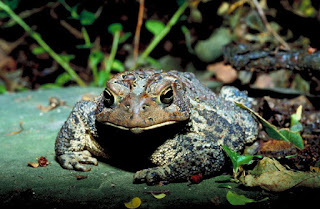The antelope jackrabbit is the source of jackalope (horned rabbit) legends. One joke that Westerners play on new people is to tell them about the jackalope (a large jackrabbit with deer horns). This legendary animal is often seen by people who have had too much to drink.
One of those fabled creatures of North America, the jackalope remains elusive, always roaming the prairies during storms. The vast wilderness and the wild unknown provided the impetus for these stories of fantastic animals lurking about just beyond civilization. Even now, it is possible that a person could encounter one in a remote desolate landscape.
Legend has it that John Colter was the first white man to encounter a jackalope in what would be Wyoming. Years later, cowboys reported seeing them during lighting storms on the prairies. At night, they could hear the jackalopes echoing their singing to their cattle. Many cowboys would attest to this mythic animal having a tenor voice.
The jackalope is believed to be a cross between an extinct species of pygmy deer and a killer rabbit. The Douglas Jackalope is the most well-known, with Douglas, Wyoming proclaiming itself the “Jackalope Capital of the World.” Besides, the Douglas “species,” there is also the Alkali Area Jackalope of the western U.S. The Jack-pine Jackalope of Minnesota and Wisconsin predates the others. According to folklorist Richard Dorson said that this particular jackalope can be found along the shores of Lake Superior.
Known as “warrior rabbits,” jackalopes are vicious when attacked. They will slash at their targets with their sharp antlers. Hunters are cautioned to wear stovepipes on their legs to keep from being hooked. Even then, few hunters survive an encounter and live to talk about it.
The jackalope may look like a figure of fun, but he is dangerous. Cowboys knew better than to hunt one whenever they heard a jackalope mimicking their songs. The jackalope appears in thundering nights, fierce and ready to kill. Never assume that something which looks cute is harmless.
Like many other mythic animals of America, the jackalope has a hidden vicious side under the humorous one. The hidden barb that lurks below the surface is the jackalope. This mythical animal teaches that humor can hurt as much as being slashed by razor-sharp horns.



























